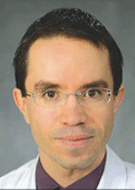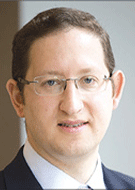Radiology Reporting Styles May Affect Training
Is radiology moving toward a “hybrid” model report?




Enjoy this excerpt and read the entire story in the July print issue of RSNA News.
While radiologists continue to debate the use of narrative versus structured reporting, the movement toward the latter may be especially beneficial to aspiring radiologists.
“Trainees are exposed to a wide variety of reporting styles without any in-depth explanation of the advantages of those specific styles,” according to Eduardo Barbosa, Jr., MD, assistant professor of radiology, University of Pennsylvania, Philadelphia. “The lack of a consistent approach in radiology reporting is often disadvantageous to trainees.”
While structured reporting offers a solution to the drawbacks of free-text reporting, a full transition isn’t likely to come anytime soon.
“There was always going to be resistance to changing something as fundamental as a radiology report,” Dr. Barbosa said.
Over the last decade or so, there has been a major push by radiology organizations, including RSNA and the American College of Radiology, to advance the concept of structured reporting as a way of providing clear, consistent and well-organized results of radiology examinations.
“There been many publications — and groups — that have come to the realization that structured reporting adds a lot of value to what radiologists do,” said Adam Flanders, MD, professor of radiology and vice chair of informatics at Thomas Jefferson University Hospital in Philadelphia, and informatics advisor on the RSNA Radiology Informatics Committee.
“Private practice groups in particular are realizing that if a radiology report is one of their principal products, they should ensure that it is as uniform as possible when it leaves the door,” Dr. Flanders said.
Such efforts, Dr. Flanders asserted, will elevate the quality of reporting and offer numerous benefits to radiology residents.
Understanding the Value of Structured Reporting
Trainees initially may view radiology reporting as an open slate, but quickly realize the benefits of a structured format, said Judah Burns, MD, program director of the Diagnostic Residency Program at Montefiore Medical Center, and an associate professor of radiology at the Albert Einstein College of Medicine in New York City.
“In my experience, trainees appreciate having structured reports available because that format gives them a framework for how to review a case and identify which are the most important aspects of that review,” Dr. Burns said.
Watch Dr. Burns discuss narrative vs. structured reporting:
Structured reporting is very helpful to trainees, especially early in their residency, said Lucy Lester, MD, PGY4, Northwestern McGaw Medical Center in Chicago and a member of the RSNA News editorial board.
“Structured reporting provides guidance for our search patterns and allows us to learn how to phrase findings. One especially helpful feature is the technique section of the report, which allows us to learn about how the study was performed and the different types of protocols we use,” Dr. Lester said.
A structured reporting regimen for trainees should start by teaching them the value of that reporting style, according to Dr. Burns.
“Residents should appreciate the advantages of structured reporting on a conceptual basis before they learn to use these reports in each specialty training area,” Dr. Burns said.
Among its advantages, structured reporting allows attending radiologists to provide residents with an expert consensus in the training environment.
“We have come together to create a structure that offers something consistent,” Dr. Burns said. “For residents, this facilitates their learning so that when they are exposed to an unfamiliar exam or modality, they have guidance as to what is needed in the report.”
Along with providing residents with a framework for developing their own search patterns, structured reporting in the training environment offers residents a guide on organizing their thoughts in order to create a report that is complete, regardless of clinical indication and pathology, Dr. Burns added.
Structured reporting also improves interactions with referring clinicians, Dr. Lester said.
“Early in residency, we are not familiar with various aspects of different studies that are important for clinicians in terms of patient management. Thus, we heavily rely on standardized reports to ensure we include the most important information for referring clinicians,” Dr. Lester said.
For More Information
Read previous RSNA News stories on radiology reports:
- Transparency, Communication Key to the Radiology Reports of the Future
- RSNA’s Redesigned RadReport Template Library Offers Best Practices Reporting
RSNA Offers Standardized Reporting Templates at RadReport.org
RSNA continues to lead the way in standardized reporting practices to enhance efficiency, demonstrate value and improve diagnostic quality.
RSNA’s RadReport.org is a free library of templates based on best practices that enable users to create consistent, high-quality reports that are comprehensive and readable to humans and machines alike.
Many templates incorporate RSNA’s RadLex® terminology and RadElement common data elements developed by RSNA in collaboration with the American College of Radiology and radiologic subspecialty societies.
RadReport.org users can search for, view and download templates, create and edit templates and share templates with the radiology community.
Access RSNA’s full library of data tools and standards at RSNA.org/Practice-Tools.